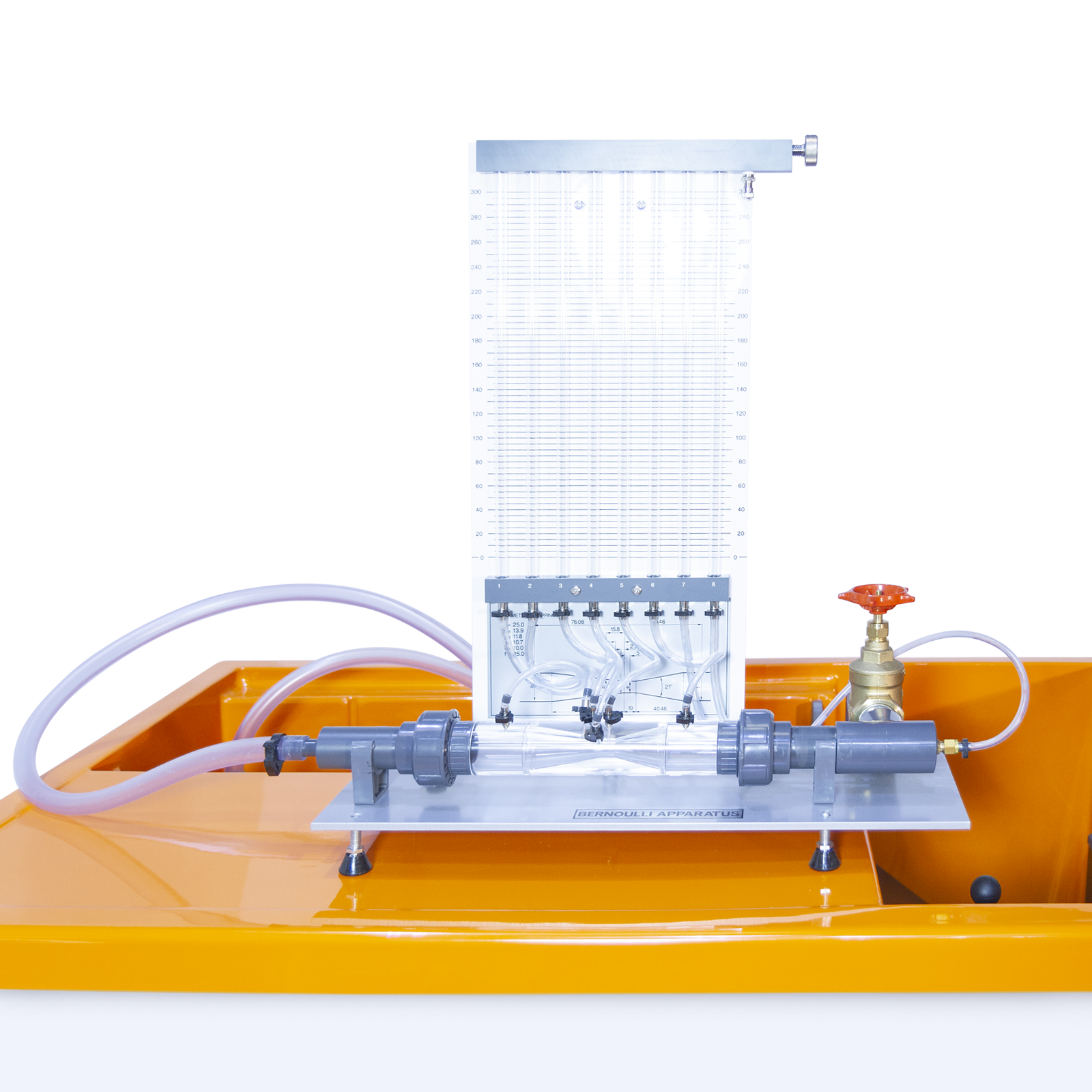
Bernoulli’s Theorem Demonstration
02 มิถุนายน 2566
ผู้ชม 410 ผู้ชม
DESCRIPTION
This accessory illustrates those circumstances to which Bernoulli’s Theorem may be applied. Also, separately, why in other circumstances the theorem gives an inadequate description of the fluid behaviour.
The test section consists of a classical Venturi machined in clear acrylic.
A series of wall tappings enable measurement of the static pressure distribution along the converging and diverging duct. A total head tube is provided to traverse along the centre line of the test section. These tappings are connected to a manometer bank incorporating a manifold with an air bleed valve.
Pressurisation of the manometers is facilitated by a hand pump. The test section is arranged so that the characteristics of flow through both a converging and diverging section can be studied. Water is fed through a hose connector and is controlled by a flow regulator valve at the outlet of the test section.
The Venturi can be demonstrated as a means of flow measurement and the discharge coefficient can be determined.
EXPERIMENTAL CONTENT
- To investigate the validity of the Bernoulli equation when applied to the steady flow of water in a converging or a diverging duct
- Conservation of energy divergent/convergent pipe flow
- Effect of friction loss on Bernoulli equation
- Recording the pressure curve in a Venturi nozzle
- Recording the velocity curve in a Venturi nozzle
- Determining the flow coefficient
TECHNICAL SPECIFICATIONS
Manometer range: 0-300mm
Number of manometer tubes: 8
Throat diameter: 10.0mm
Upstream diameter: 25.0mm
Upstream taper: 14°
Downstream taper: 21°







